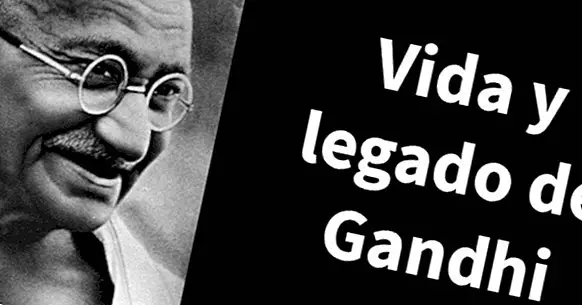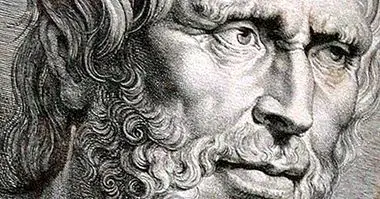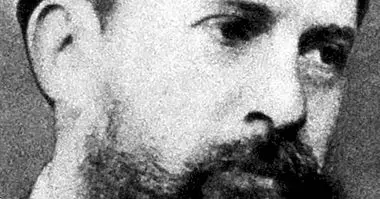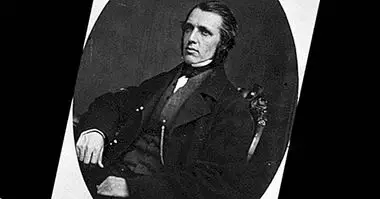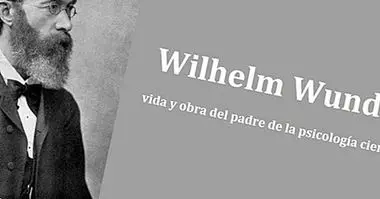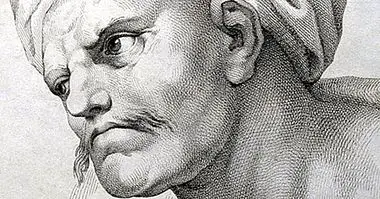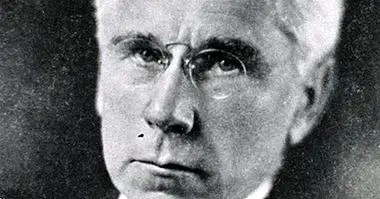Mahatma Gandhi: biography of the Hindu pacifist leader
Mohandas Karamchand Gandhi; is the name of one of the most recognized spiritual leaders and influential of recent times, who participated actively in the attainment of Indian independence and whose belief in peaceful resistance and non-violence would become especially known. Better known as Mahatma Gandhi, the figure of this spiritual leader is still revered by many today.
Next we will give a brief review of the life of this reference of nonviolent political action, which has changed the way of thinking of a good part of the inhabitants of the planet.
To understand who Mahatma Gandhi was, it is first important to understand how his ideas developed. Let's start with your first years, which serve to know the context in which you were educated.
- Maybe you're interested: "80 phrases of Gandhi to understand his philosophy of life"
Origins of the biography of Gandhi
Mohandas Karamchand Gandhi was born in 1869 in the city of Porbandar, northwest of India . His father was Karamchand Gandhi, prime minister of the city and belonging to the merchant caste. His mother was Putlibai Gandhi, a deeply religious woman who conveyed respect for different beliefs and ways of life and came from the pranami, a religious tradition that mixed the precepts of Hinduism and Islam.
In his childhood and adolescence Gandhi was a withdrawn young man who did not stand out academically . He married at thirteen years with a woman of the same age called Kasturbai, in the case of an arranged marriage. Mohandas would fall in love with her.
Later Gandhi he moved to London to study law at University College . There he would finish his career and, in addition, he would be able to read various classics of Western and Eastern literature (highlighting books such as Bhagavad Gita and the reading of Tolstoi's works) and of contemplating the western point of view regarding his land.
Regarding the spiritual and religious facet It would be influenced by a large number of different religions and beliefs: in addition to Hinduism it would be influenced by Islam, Christianity, Buddhism and Jainism (the latter advocated nonviolence and respect for both living beings and the different elements, this being an aspect that he would use as a basis in his political struggle). For Gandhi all these beliefs had in common the idea of renunciation.
After finishing his law studies, he returned to his country of origin, shortly after the death of his mother, where would you begin to practice as a lawyer . However, his first professional experiences were extremely negative, and he did not enjoy great successes. He was offered a contract in South Africa, which led him to move with his family to the country in 1893.
Stay in South Africa
Once in the African country, Gandhi noted the high degree of discrimination against Hindus , suffering himself numerous humiliations and humiliations. After fulfilling his contract, he learned of the creation of a new law that was considering withdrawing suffrage to the Indian population. This fact would cause him to decide to postpone the return to his native country, which did not happen until more than two decades later.
After elaborating various petitions to the colonial government that were not heard, he would decide to help the country's Indian community through various means: opening law firms, founding newspapers and organizing the Indian Party of the Congress of Natal. All this would help to make visible the abuses committed towards their people by the British .
At this time I would read Western thinkers and thinkers who influenced their thinking, ending up forging their ideals regarding the respect of every creature regardless of their opinion, religion or social status and the usefulness of the struggle through nonviolence .
Later, after the worsening situation of the Hindu population and the elaboration of a law that forced the Indians to register, would begin to employ and encourage non-violent resistance and civil disobedience . Despite being imprisoned on several occasions and the protests were harshly repressed by the government (including torture and shootings), the country received severe pressures from abroad that would eventually cause a solution to be negotiated with Gandhi in 1913, the pact Smuts-Gandhi. Thus, the peaceful resistance and the different organized marches would end up being successful,
It was at this time also when she decided to become celibate , a fact facilitated in part by the feeling of guilt that caused him that during his youth his father had died while maintaining relations with his wife.
Return to India: the pacifist struggle continues
In 1914 Gandhi and his family would return to India, traveling throughout the country dedicating themselves to different causes, such as the struggle for free cultivation or the reduction of taxes. Mohandas would begin to be called Mahatma (whose meaning in Sanskrit is "big soul") at that time, being this nickname thought by the poet Tagore.
So, Gandhi began to fight to eliminate the existing caste system until then , using methods such as the hunger strike to achieve agreements such as the cessation of separate suffrages for pariahs and the rest of the Hindu population.
As well would begin to be interested in achieving the independence of their country . The arrival of the First World War in 1914 caused Gandhi to consider it necessary to support the British in their struggle, believing in the need for the people of India to have representation in the conflict.
However, the approval of Rowlatt's law according to which any act that could be considered sedition through the arrest without a warrant of any suspect would generate a great deal of controversy and concern and generated various protests in the population. , what they were repressed harshly in the Amritsar massacre .
All this would cause Gandhi to decide in 1919 to participate actively in the search for the independence of the country and to make use of peaceful resistance and civil disobedience. Among other actions, he helped organize the congress and feed different marches, like the so-called march of the salt of 1930 , originated due to the high taxes on this matter. Mohandas would enter prison many times throughout this period.
- Related article: "The 11 types of violence (and the different kinds of aggression)"
Mahatma Gandhi and the Second World War
The arrival of World War II in 1939 also caused a greater search for independence on the part of Gandhi and in general of India, to be included in the conflict unilaterally by the British without having the opinion of the people. It generated a deep movement of resistance and the desire for the cessation of British domination about the country.
As a result, there was a high number of arrests, including that of Gandhi, and the death of a large number of demonstrators. During his stay in the Kasturbai prison, his wife died . Gandhi was released before the end of the war because he was weak and ill. After the end of the war, Britain would definitely decide to withdraw from India.
The arrival of independence and conflicts between Muslims and Hindus
In 1947 India was finally declared independent. Gandhi and many others wanted to achieve a united India, but part of the Muslim sector of the country would deny this fact to be a minority, requesting the separation of Pakistan . This would end up unleashing different armed conflicts between Hindus and Muslims. In response, the government decided to divide the territory into two countries, India and Pakistan.
Gandhi performed various marches in order to stop the bloodshed and to restore peace, despite the fact that both sides tried to attack his life on several occasions. Later he would start a hunger strike for this purpose. After five days of this strike, the leaders of the different parties agreed to cease hostilities.
Death and funeral
Mahatma Gandhi killed in 1948, in Delhi , hours after receiving several shots while on his way to pray. The executor of the crime was Nathuram Godse, a member of an extremist Hindu organization that opposed the freedom of creed and considered Gandhi a traitor because of his defense of peace between Hindus and Muslims.
After the death of the spiritual leader, the government would decree thirteen days of mourning. His body was incinerated and his ashes distributed in numerous urns that would be distributed by India, many of them scattered by the rivers of his land.
Bibliographic references:
- Gandhi, M.K. (1993). An Autobiography: The Story of My Experiments With Truth. Boston: Beacon Press.
- Wolpert, S. (2001). Gandhi's Passion: The Life and Legacy of Mahatma Gandhi. Oxford University Press.

